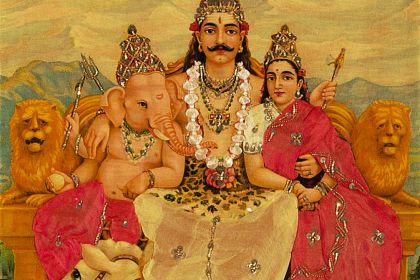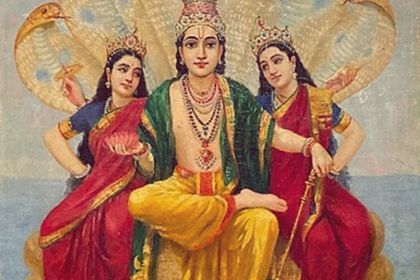MEDITATION
Nirvana Shatkam: meaning behind the major chant of non-duality

Adi Shankara by Raja Ravi Varma
Music Period: Indian Classical
Country: India
Genre: Devotional Song
Piece of Music: Atma Shatkam
Artist: Pandit Jasraj
The Atmashatkam or Nirvāṇaṣatkam is the essential Sanskrit hymn composed around the 8th century AD by the leading Indian thinker Adi Shankara to convey the basic teachings of Advaita Vedanta—the principal Hindu school centered on the philosophical doctrine of non-dualism. Indian ideas of non-dual consciousness are common to all Dharmic religions and are postulated as the unity of individual soul Atman with the ultimate reality Brahman.
The chant is composed in the popular Sanskrit poetic form śloka—one that counts eight syllables per line of the quatrain—and contains six stanzas as follows from the title Șaṭ-ka meaning six-verses.
The main purpose of Nirvana Shatkam is to answer the question "who am I?" by defining the self through all the concepts it is not. Here is the approximate meaning of each verse:
- I am not the mind, nor intellect, nor ego, nor five senses, nor five essential elements of creation.
- Neither can I be termed as energy, nor five types of breath, nor the five sheaths of consciousness.
- There is no like or dislike in me, no greed or delusion. I have no duty, nor any money, nor any desire, nor even liberation.
- I have no virtue or vice, no pleasure or pain. I need no mantras, no scriptures or rituals.
- I have no father, no mother, no fear of death for I was never born.
- I am devoid of duality, my form is formlessness. I am everything, everywhere, every time, always in equilibrium.
Each stanza ends with the same fourth line—often repeated as a chorus—with the statement, "I am this eternal knowledge and bliss, love and pure consciousness."
Listen to Nirvana Shatkam set to Raga Darbari by Pandit Jasraj:
Melodically, Nirvana Shatkam normally follows one of the ragas of Indian classical music as is the case with this Darbari raag in the rendition by Pandit Jasraj at the Paris Théâtre de la Ville in 1996.
Darbari raag belongs to the Kanada family ragas and follows the Asavari thaat—a classic Indian seven-note scale identical to the Aeolian diatonic scale of Western music often referred to as the natural minor scale.



